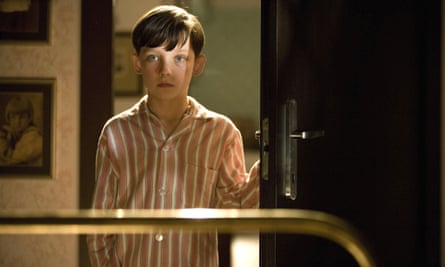Do you remember those plastic slide puzzles you used to get in party bags? They were made up of a three by three grid with eight tiles and a blank square – the missing tile allowing you to move the others around.
This nine-grid puzzle was the central image behind the story of Mark Haddon’s The Red House – although, bizarrely, he didn’t know it when he wrote the book.
“I was being interviewed by Claire Armitstead at the Edinburgh Books Festival when she said that when she read the book she kept thinking about those tile puzzles,” wrote Haddon on his blog after the interview.
“I felt a lurch, because before writing The Red House I’d given up on a novel called The Missing Square, the central image of which was one of those tile puzzles, and whose organising conceit was that certain absences may make a world imperfect, but they enable that world to change and generate new meanings. I suddenly realised this image had remained a model for the central structure of The Red House, which is a story about the eight remaining members of a family and a ninth member – a stillborn daughter – who is still having a profound effect on the family despite, or because of, her absence.”
This hidden structure enabled Haddon to plot and plan his novel around a central theme without even realising it. Unusual, but perhaps not unheard of, this got me thinking: how many other novelists have plotted their books subconsciously?
Perhaps another subconscious plotter is John Boyne, who wrote the first draft of The Boy in the Striped Pyjamas in just three days and is known for writing without planning. I caught up with him to see how much of his writing he puts down to hidden thoughts.

“I think a lot of my writing comes from the subconscious. The Boy in the Striped Pyjamas was an unusual writing experience – no sleep for three days and constant writing. I wouldn’t normally do that. Nowadays, when I write I start with an idea for a scene or a character and just see where it takes me.”
Like Haddon, Boyne finds some unconscious thoughts reveal themselves in the plot. “Sometimes when you’re mining your thoughts for ideas you realise you’ve been thinking about a particular story for a while. And then you start writing sections that you’re not sure why are in the text – but later on in the writing the subplot reveals itself.”
Boyne also admits he doesn’t know where the story is going to go when he starts writing. “I never know the ending of my books. The more you write [without planning] the better you get at it and the more interesting the work becomes.”
So, if the improvising writers see hidden plots emerge in their work, what about life’s planners? Take Michelle Paver, a former City lawyer turned author, who likes to plan her books in stages. When I spoke to Paver, she agreed this hidden logic can reveal itself while writing.
“Even if you plan your book, the actual writing is unplanned. All stories come from the subconscious – which is why it doesn’t make sense to over-plan. And it’s only once you get on the ground with the characters that you think ‘Oh hang on a second he’s not going to want to do that’ and you have to change your plot. So I’m constantly being surprised and finding unplanned things – because the writing is a process of experiencing things on the ground with the characters.”
A bit of planning is good, and it can test the strength of your story, but don’t treat it like a blueprint, says Paver. “I always imagine it like a whole load of plates spinning, and you’ve got the plan, the research and the plot, and you’ve got to kind of keep them spinning and constantly moving between one and the other.”
So it seems both those that plan, and those that don’t, acknowledge the role of the subconscious in their work. How much then of what authors pen is truly unstructured? And how much is the result of subconscious planning? As with those plastic slide puzzles, although the author has an image of the final objective, this picture is not always available as the story unfolds.
So is the writing truly spontaneous? It could be argued that all writers have a master plan for their work - some of them just don’t know it.

Comments (…)
Sign in or create your Guardian account to join the discussion